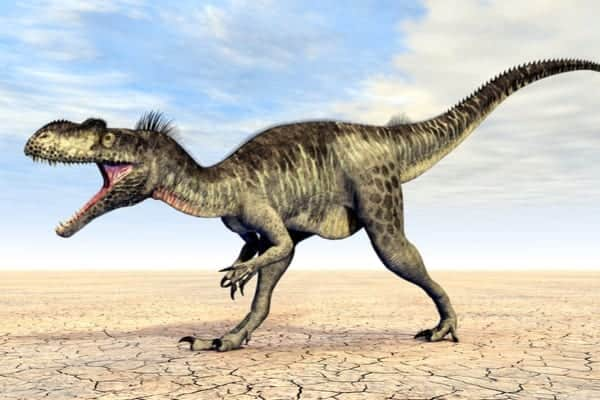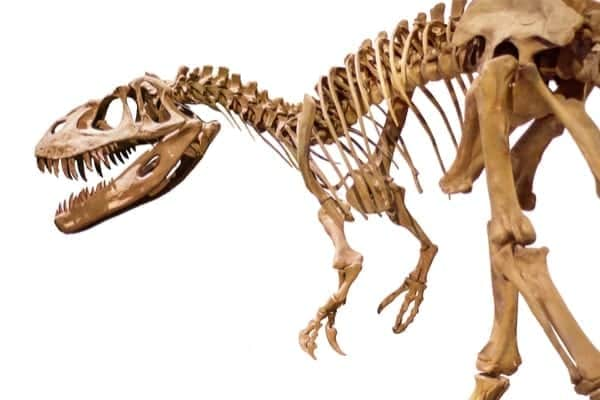These are the dinosaurs that would have roamed around the South
and live on Freeview channel 276
For many of us, the mention of dinosaurs might conjure up images of scorching hot desert-like prehistoric landscapes that feel worlds away from home. However, a considerable number of the animals actually lived in the UK millions of years ago.
In the South of England, a large number of fossils have been uncovered, from Cambridge and Oxford to Bristol and Hastings in East Sussex. This suggests that the entire area was once home to several different kinds of dinosaur. Cetiosaurus, Ankylosauria and Maniraptora are among the types of dinosaur that would have roamed all over the South of the country.
Advertisement
Hide AdAdvertisement
Hide AdThe South’s dinosaur population


Found in both Oxfordshire and around the Cotswolds area, the Cetiosaurus was originally thought to be a marine animal after its discovery in 1842. For this reason, its name translates as 'whale lizard. In reality, the land-dwelling dinosaur was a long-necked herbivore that walked on four legs.
The Megalosaurus was the first dinosaur to be officially named, following its discovery in Oxfordshire in 1824 (Image: Shutterstock)
The mainly herbivorous Ankylosauria fall under the Thyreophora category, and were sometimes also known as 'shield bearers' because of their natural body armour. Covered in plates or spikes, most of these dinosaurs had small brains in comparison to their body size. Evidence of these dinosaurs has been found in Cambridgeshire and East Sussex.
Maniraptorans were around during the Jurassic period and lived in the Oxfordshire area. Ancestors of common birds we now see every day, Maniraptorans had long arms with three-fingered hands, and almost certainly had some kind of feathers, at least in infancy. Interestingly, these are the only dinosaurs known to have breast bones.
Advertisement
Hide AdAdvertisement
Hide Ad

The UK’s most common dinosaurs
Outside of the South, the significant number of fossils discovered on the Yorkshire coast and the Isle of Wight suggests that these areas were also once dinosaur hotspots. While it seems the Scottish Highlands and the Isle of Skye once had resident dinosaurs, no remains have been found on the east coast of Scotland, or in the country’s Central Belt as yet.
Bulky herbivores, Iguanodon, and duck-billed Ornithopods would have been common sights across the UK at one time. Signs of the enormous Sauropod (the group which includes the largest animals to have ever lived on land) have also been found in several locations.
The first dinosaur


The Megalosaurus (meaning ‘great lizard’ in Ancient Greek) was the first dinosaur to be officially named, following its discovery in Oxfordshire in 1824. This is the most commonly found type of dinosaur in the UK.
A Tyrannosaurus is an example of a Theropod, although the Tyrannosaurus Rex was not native to the UK (Image: Shutterstock)
Advertisement
Hide AdAdvertisement
Hide AdOriginally thought to be a giant lizard measuring 20 metres in length, modern research has found that the Megalosaurus was around seven metres long and weighed more than one tonne. This dinosaur had a large head and short forelimbs, walked on two legs and used its horizontal tail for balance.
Modern discoveries


You may be surprised by the variety of fossils that have been unearthed in the UK over the years, but discoveries are still being made today.
In early April 2018, enormous 170 million year old prehistoric footprints were found on the Isle of Skye in Scotland, and determined to have belonged to Sauropods. Brachiosaurus and Diplodocus are well-known types of Sauropod.
‘Inventors’ of the dinosaur
While the majority of the world’s dinosaur fossils have been discovered in the United States, more than 500 were found in the UK. In fact, a higher number of the relics have been uncovered in the UK than in over 190 other countries.
Advertisement
Hide AdAdvertisement
Hide AdIguanodons were bulky herbivores and would have been a common sight across the entire UK millions of years ago (Image: Shutterstock)
In fact, the term ‘Dinosauria’ was first coined by English paleontologist, Sir Richard Owen, to describe the three dinosaurs known about at the time - Megalosaurus, Iguanodon, and Hylaeosaurus. Translated from Ancient Greek, ‘Dinosauria’ means ‘fearfully great reptiles’.


Most UK dinosaur remains have been recovered from rocks dating back to the Middle Jurassic and Cretaceous periods. This means that these animals were roaming the country up to 174 million years ago.
Dinosaurs around the globe
Around the rest of the world, the US have recorded more than five thousand dinosaur fossil finds, and Canada lay claim to over 1,400 discoveries. In North America, many fossils have been found clustered along the spine of the Rocky Mountains.
Main image: Shutterstock